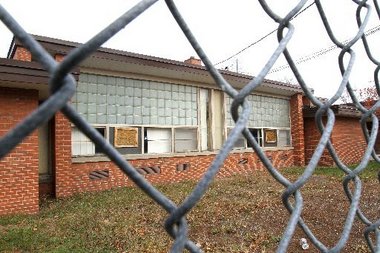It is that time of the year when new school budgets are reviewed and cut backs are made. What happens when a building in your district must be closed? The decision is anguishing and the affects it has on families are profound but the long-term effects may turn out to be beneficial.
 Many schools have buildings that are pushing the age of 50 or older. They are beginning to need extensive repairs to keep up with today’s standards. They become a financial burden.
Many schools have buildings that are pushing the age of 50 or older. They are beginning to need extensive repairs to keep up with today’s standards. They become a financial burden.
Building age many be only one factor in the decision to reconstruct or redistrict. Budgets and population also contribute to the decision to close a building. Other factors may include operating costs of each building, environment factors due to zoning, undesirable businesses moving close to the school, an imbalance of ethnicity, transportation costs, etc. The bottom line is – the effects flow into community relationships, routines, and jobs.
Changes in curriculum also determine the fate of a building if it is unable to support the electrical work needed for advancement in technology. Many times buildings are destroyed or closed because it is cheaper to build new than it is to make the needed electrical repairs in an old building.
How does one survive a school closing? How does a family help children to ease into a different building with students of another community?
The district staff from the combining schools will play a large part in easing the transition through:
• socialization and scheduled activities
• a preview of the new grade and teacher
• an open house
To have a successful transition parents and educators need to communicate and trust each other to understand that the closing of a building and the combining schools is the best scenario. Teams of parents and teachers working together in a concerted effort will make a successful new school year. They must accept the viewpoints of others and understand that school directors don’t just decide to close a building without a valid reason.
If you need to help your child adjust to a new school community, stress that it is an exciting time. Some steps you may need to take:
• visit the new school to get acclimated to the surroundings
• review the handbook or website so children see photographs, activities, sports, and the curriculum
• if there are summer classes, sign up for them
• remind your child of other ‘firsts’ in their lives
• always find a reason to socialize in the new community
Control your own anger so it doesn’t rub off on your child and help him/her to accept the new teacher and environment. Help yourself and your child to realize that anxiety is a part of life and try to laugh through it. Keep a smiling face and set up meeting dates with past acquaintances. Let children know that others are also anxious about the new school.
As a student and later, a teacher, I experienced several community changes that involved the closing of a school, the building of a new school, and the merging of four communities to form one school district. None of which were pleasant, but; our parents and teachers understood and stuck by the district’s decision to unite the students. It took some time but turned out for the best. As students, we grew; as teachers, we acquired a greater knowledge and camaraderie that led to high quality teaching methods and the formation of one new community.


